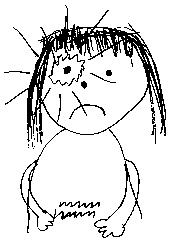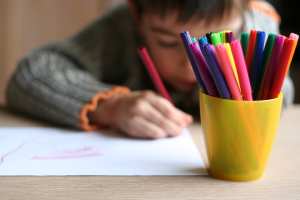Have your child draw their headache (why and how)
Diagnosing headache and migraine in children isn’t easy – especially in young children. And as many parents know from experience, it’s a challenge to even understand what’s happening in your own child. Should they go to the doctor? Are they just imitating someone else’s behaviour? Is this something new, or a headache they’ve had before?
There is increasing interest in using art to diagnose headache and migraine in children. So far, the results are encouraging.
A little background
Early last century, using drawings from children to diagnose mental illness began to become popular. Many of you are familiar with this approach (if only from the movies). There is some debate over how effective this type of diagnosis is, but the idea is spreading beyond just emotional and mental issues.
 |
Having children "draw their headaches" is turning out to be surprisingly helpful. Investigations particularly in the 80s and recent years have confirmed this. Take for example the 2002 study The Usefulness of Children’s Drawings in the Diagnosis of Headache, which used the method with 226 children. The authors of the study found the method to be very accurate, and recommended it be used, though in conjunction with the normal medical histories and oral exams.
Earlier this year, a study of 48 children evaluated the use of art in the diagnosis of migraine (see Children and adolescent’s drawing for the diagnosis of migraine). Again, diagnosing with the drawings was found to be very accurate, meaning that artistic diagnosis used together with normal examinations could be very helpful.
Children tend to communicate many things better through drawing. They know something is happening to them, but don’t understand all the words we often use (like stabbing pain, nausea, throbbing).
Try it!
So my advice? Couldn’t hurt to try it. Try some of the methods used in these studies. In the 2002 study, this was the method (highlight mine):
At the beginning of the visit, before any history was obtained from the child or parent, each child was provided with a blank, unlined piece of white paper (8.5 x 11 inches) and a number 2 pencil with an eraser. The child was then asked to "Please draw a picture of yourself having a headache. Where is your pain? What does your pain feel like? Are there any other changes or symptoms that come before or during your headache that you can show me in a picture?" To minimize bias, no leading questions or additional instructions were given. Most children participated willingly; the remainder complied after a bit of encouragement. There were no refusals. Additional embellishment of the drawing (eg, words of explanation, labels) was neither encouraged nor prohibited, and many children added such explanatory notes to their picture.
Take the picture(s) to your doctor, as an extra tool for them to use. Children in these studies ranged from age 4 up to 19.
Additional thanks to Understanding Children’s Drawings by Cathy A. Malchiodi for some of this information. Read more about child migraine and child headache issues.

